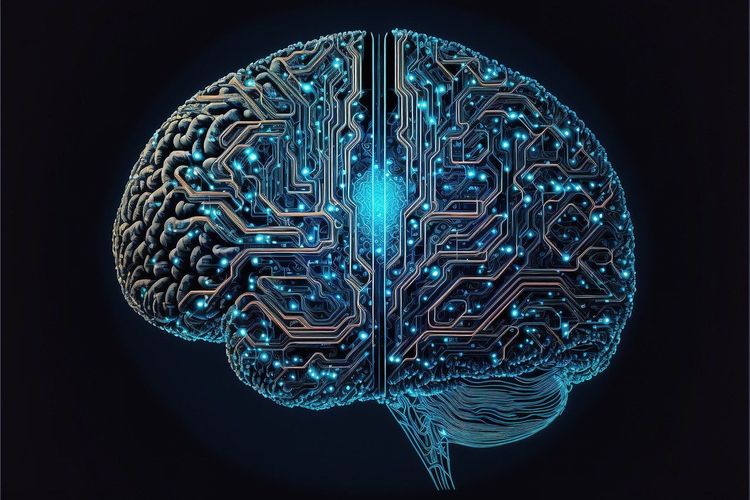In the realm of transformative technologies, ChatGPT has significantly altered perceptions of writing and coding since its debut.
However, this innovation has introduced substantial challenges, particularly in education, where students may be tempted to use ChatGPT for writing assignments or exams. This form of plagiarism hampers genuine learning and has prompted educators to seek effective ways to identify AI usage. To address these concerns, many are turning to tools like GPTZero, a detection software developed by Edward Tian, a computer science student at Princeton University. This user-friendly tool enables anyone to check the likelihood that a piece of text was generated by ChatGPT. Here’s how to get started.
What is GPTZero?
GPTZero is an online application designed to discern whether text is authored by a human or an AI, such as ChatGPT, GPT-4, or Claude. It can also identify texts co-created by humans and AI. Created in January 2023, GPTZero emerged from research conducted by Princeton PhD candidate Sreejan Kumar and the university’s Natural Language Processing Group.
Is GPTZero free?
While GPTZero primarily serves educators, it’s freely accessible to everyone. Users with a free account can scan up to 40 documents per hour. For $10/month, the Essential plan raises the limit to 150,000 words per month and includes access to advanced detection models, plagiarism checks, and grammar feedback. The $16/month Premium plan increases the allowance to 300,000 words and offers additional features like multilingual detection. The top-level Professional subscription, also $16/month, allows for 500,000 words per month, plus an additional 10 million in overage.
Is GPTZero accurate?
Though GPTZero claims high accuracy, users have reported inconsistent results. For instance, when instructed to produce a brief narrative about "The Old Man and the Sea" in a high school style, GPTZero mistakenly marked text as AI-generated. Even after introducing minor errors to the text, the tool still indicated it was likely AI-written. Tests have shown that GPTZero often correctly identifies text from various generators, suggesting it performs relatively well overall. However, users should remain vigilant, as occasional misclassifications can occur, and it’s important to manually verify the content for errors.
How does GPTZero work?
GPTZero operates by analyzing the randomness of text, known as perplexity, alongside its variability—termed burstiness. AI-generated content maintains a consistent level of perplexity and burstiness, while human authors typically display more variation. Continuous improvements are underway, with ongoing tests aimed at enhancing the precision of AI text detection, including evaluating implicit biases.
How can I use GPTZero?
To use GPTZero, visit its website and paste your text into the designated area labeled "Try it out." Alternatively, you can upload a PDF, Word document, or text file and click the "Get Results" button; just remember to agree to the terms of service.
Alternatives to GPTZero
GPTZero is not the only AI-driven plagiarism detection tool available. OpenAI has its GPT-2 Output Detector, with an updated version reportedly in development. Other tools offering similar capabilities include Content at Scale AI Content Detection, ZeroGPT, Writefull GPT Detector, and Originality.ai, each boasting varying levels of accuracy.
Why is my writing being flagged as AI?
As AI technologies like ChatGPT have gained prominence, concerns have risen about distinguishing between AI-generated and human-written content. This presents particular challenges for students, who risk academic penalties if found using AI assistance. Some have discovered that their original work is flagged by tools such as GPTZero, even when it isn’t AI-generated. The issue of false positives is similar to what one writer experienced at The Atlantic, where an initial 74% of their original writing was flagged as plagiarized. Through extensive edits and adjustments, they reduced that figure to zero, but it required considerable time and effort.
Mistakes in detection can stem from various reasons, including non-native English use, repetitive phrasing, or reliance on editing tools like Grammarly. If your writing is erroneously flagged, take care to verify your quotes and citations, and consider minimizing the use of automatic editing tools. Remember that GPTZero's algorithm is proprietary and remains unexplained, meaning that disputes over alleged generative plagiarism could hinge on circumstantial evidence.
Do we really need plagiarism checks?
OpenAI introduced ChatGPT to the public in November 2022, quickly amassing over 100 million users by January 2023, leading to heightened scrutiny surrounding plagiarism. As AI tools are integrated across various platforms—like Microsoft with Bing and Google’s Gemini—the debate over ownership and citation in AI-generated content intensifies. AI models learn from human-created material across diverse fields, complicating credit attribution. It may be essential to reassess our understanding of copyright and consider strategies for recognizing the numerous contributors to AI-generated works, as traditional citation practices grapple with the complexities introduced by these technologies.







